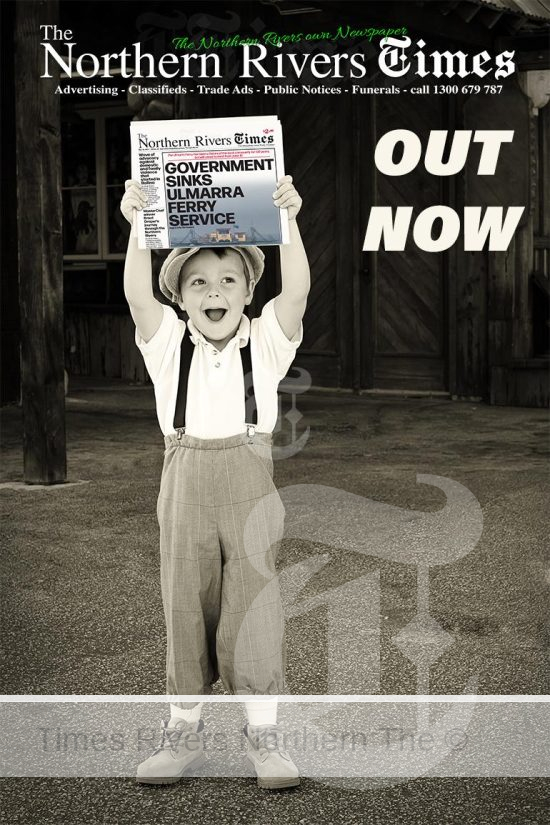LOCAL WOODWORKER AND HIS AWARD-WINNING BAR STOOL
By Sarah Waters
The talents of Kyogle woodworker Garan Hale have been recognised on the national stage with one of his furniture creations taking out a top prize.
For more than 40 years, Mr Hale has created solid timber joinery and fine furniture, using traditional joinery methods, for builders, architects and luxury homeowners in the Northern Rivers and Southeast Queensland.
Advertisements

 Earlier this month, his bar stool ‘Stella’ won the Sunshine Coast Wootha Prize in the furniture category at The Maleny Wood Expo.
Earlier this month, his bar stool ‘Stella’ won the Sunshine Coast Wootha Prize in the furniture category at The Maleny Wood Expo.
The Maleny Wood Expo is considered one of the best wood shows in Australia.
The Wootha Prize exhibit is a main attraction, which offers wood artisans and furniture makers, from across Australia, the chance to showcase their sustainably crafted pieces.
This year, entrants were invited to explore the theme ‘Dovetails’ which was open to their interpretation.
Mr Hale said after years of working with ‘everything to do with wood’ he was at the point in his career where he wanted to focus predominantly on making furniture.
“I wanted to enter my stool just to get some more exposure for it,” Mr Hale said.
“But it didn’t have any traditional dovetail joints in it, so I thought I’d design a (bird’s) dove tail,” he said.
Mr Hale studied a dove tail, came up with a drawing and experimented with about 40 different feathers he handcrafted.
He estimates the overall process took about 80 hours of work, but he lost count along the way.
 “I initially started making the feathers, with a central stem, with a 30-degree angle between the stem and the outer feather.
“I initially started making the feathers, with a central stem, with a 30-degree angle between the stem and the outer feather.
“I made about 40 feathers of different Australian timbers to get the colours coordinated and the detail of the dove’s tail, before I could start the inlay process.”
Each of the 18 feathers, he decided on for his final design, were inlaid separately into the curved bar stool seat, before being flushed off and detailed.
The local Australian timbers Mr Hale used included red cedar, white cedar, red gum, white beech, tulip oak, silky oak and blue quandong.
He specially wanted to showcase local Australian timber in his design.
“I’m all about the promotion of Australian timber.
“We’ve got some of the best timber in the world and we’ve got more variety of timber on the east coast of Australia, than anywhere else in the world – bar the Amazon.
“From a woodworker’s point of view, it really does start from the forest.
“You really need to understand forestry and the different types of trees … where they grow and where they don’t grow and what trees are the best to use for different types of woodwork.
“Certain types of Australian wood have a class 1 durability, so they’re really good for strength and structure, such as Tallowwood and Crow’s ash, whereas other cabinet timbers are really good to look at.”
Despite Mr Hale’s reputation as a highly talented woodworker, he had never competed in a woodworking competition before and had no expectations about how he was going to go.
“After all these years, I feel confident making anything from wood, but there are a lot of good wood workers around and it’s all up to the judge’s discretion.”
The judges noted ‘the exceptional quality of work and craftsmanship’ in his furniture design.
Mr Hale said he now hopes to bring many of his other designs to life.
“There’s still plenty I want to do – I’ve got all these designs in my head.
“The older I get, the more I realise how lucky I am to be a part of that journey where I’m creating and constantly challenging myself.”
All of Mr Hale’s creations are made from local timber he salvages from trees which have fallen over on farms, bushland or washed up in floods.
He has a factory-style set up at his home, where he mills the timber, strips it back and dries it, a process which can take 12 – 15 months (depending on the season) before he is able to use it for woodwork.
When he is not in his shed working with wood, he spends time regenerating seven acres of native bush on his property.





 Tweed Shire News2 years ago
Tweed Shire News2 years ago
 Motoring News1 year ago
Motoring News1 year ago
 COVID-19 Northern Rivers News3 years ago
COVID-19 Northern Rivers News3 years ago
 COVID-19 Northern Rivers News3 years ago
COVID-19 Northern Rivers News3 years ago
 Northern Rivers Local News3 years ago
Northern Rivers Local News3 years ago
 Health News3 years ago
Health News3 years ago
 COVID-19 Northern Rivers News3 years ago
COVID-19 Northern Rivers News3 years ago
 NSW Breaking News3 years ago
NSW Breaking News3 years ago








 Earlier this month, his bar stool ‘Stella’ won the Sunshine Coast Wootha Prize in the furniture category at The Maleny Wood Expo.
Earlier this month, his bar stool ‘Stella’ won the Sunshine Coast Wootha Prize in the furniture category at The Maleny Wood Expo. “I initially started making the feathers, with a central stem, with a 30-degree angle between the stem and the outer feather.
“I initially started making the feathers, with a central stem, with a 30-degree angle between the stem and the outer feather.




























